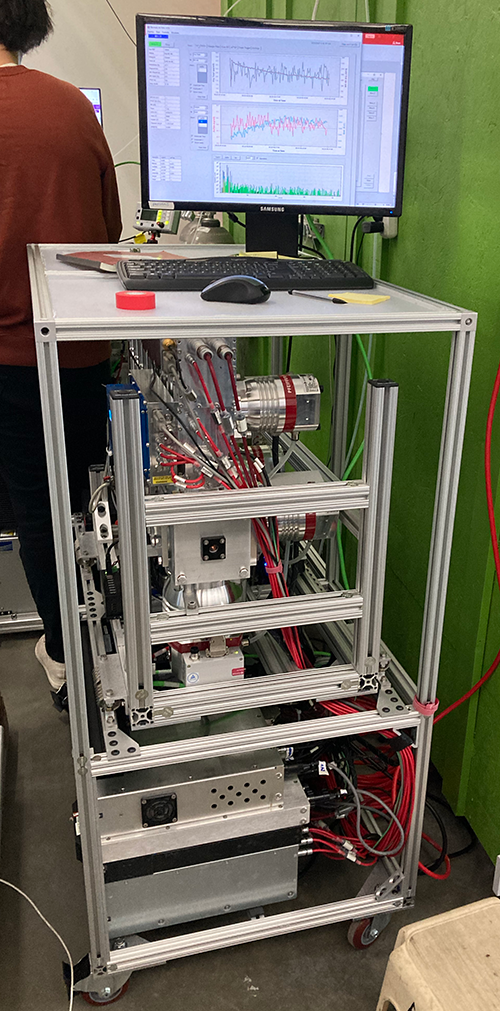Tropospheric Chemistry: Instruments
High-Resolution Time-of-Flight Aerosol Mass Spectrometer (HR-ToF AMS)

Principle of the Measurement
Ambient aerosols are sampled into a vacuum chamber, focused with an aerodynamic lens into a beam, impacted on a vaporizer, and evaporated into the electron impact ionization source of a mass spectrometer. Mass distributions are measured using a particle-beam chopper at the exit of the lens and the particle time-of-flight in the vacuum chamber between the chopper and the time the signals are detected in the mass spectrometer.
Species Measured
Non-refractory submicron aerosol composition, including aerosol sulfate, nitrate, ammonium, chloride, and organic material.
Airborne Detection Limits and Time Response*
Sulfate: ~0.2 µg sm-3 in 1 second
Nitrate: ~0.3 µg sm-3 in 1 second
Ammonium: ~0.1 µg sm-3 in 1 second
Chloride: ~0.2 µg sm-3 in 1 second
Organic mass: ~2.9 µg sm-3 in 1 second
*Detection limits are from the 2019 FIREX-AQ field campaign aboard the NOAA Twin Otter, using averages from 2-9 hours after starting the pumps.
Manufacturer
Major Field Projects / Platforms
- 2019 FIREX-AQ (NOAA Twin Otter, using instrument from Environment and Climate Change Canada)
- 2020 COVID-AQS (NOAA DSRC, using instrument from Environment and Climate Change Canada)
- 2022 SCENTS (CSU Science Chamber)